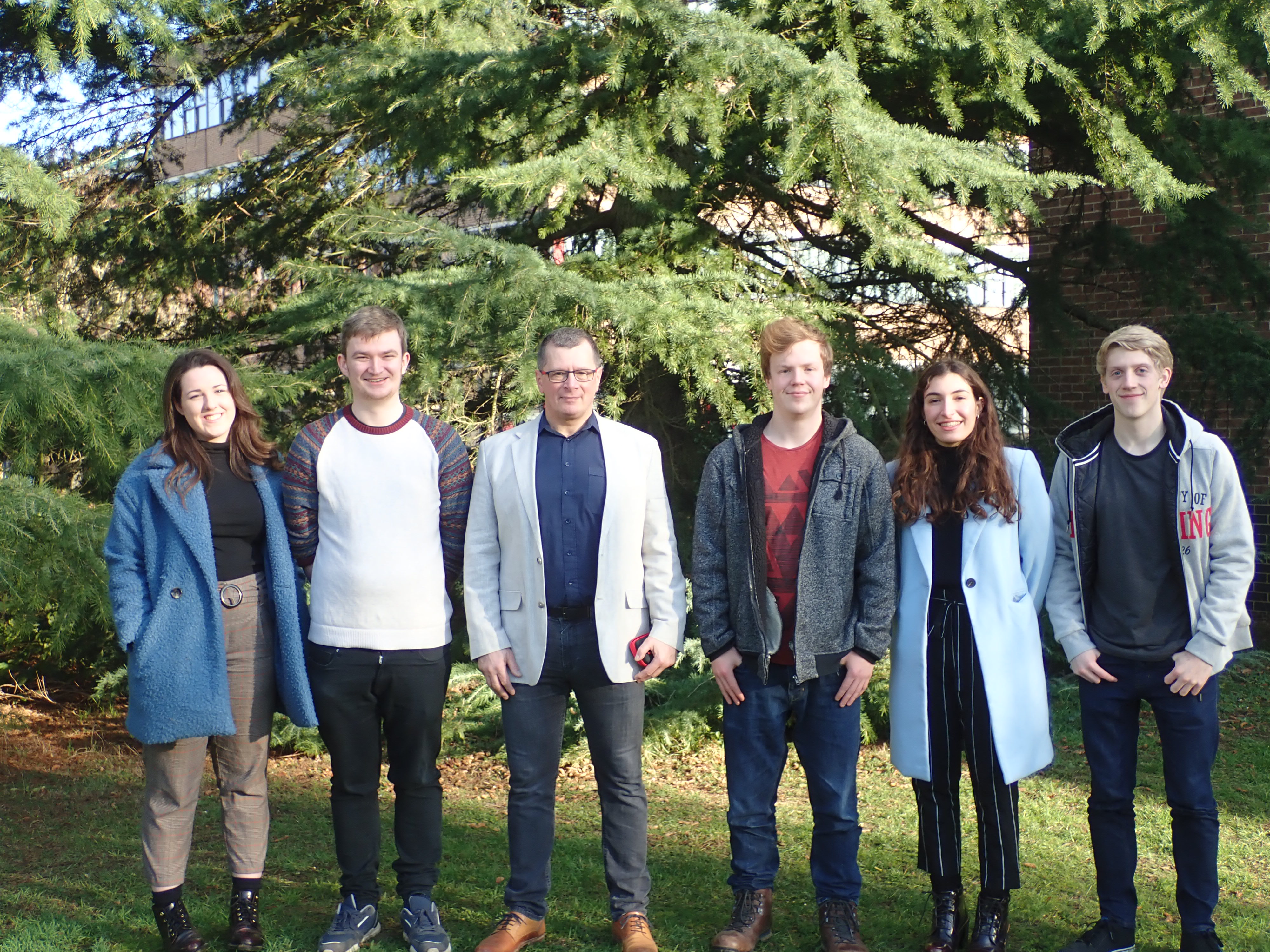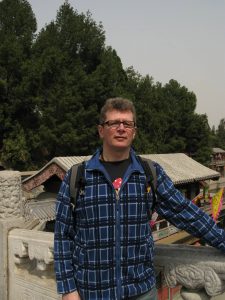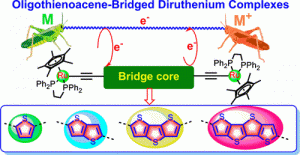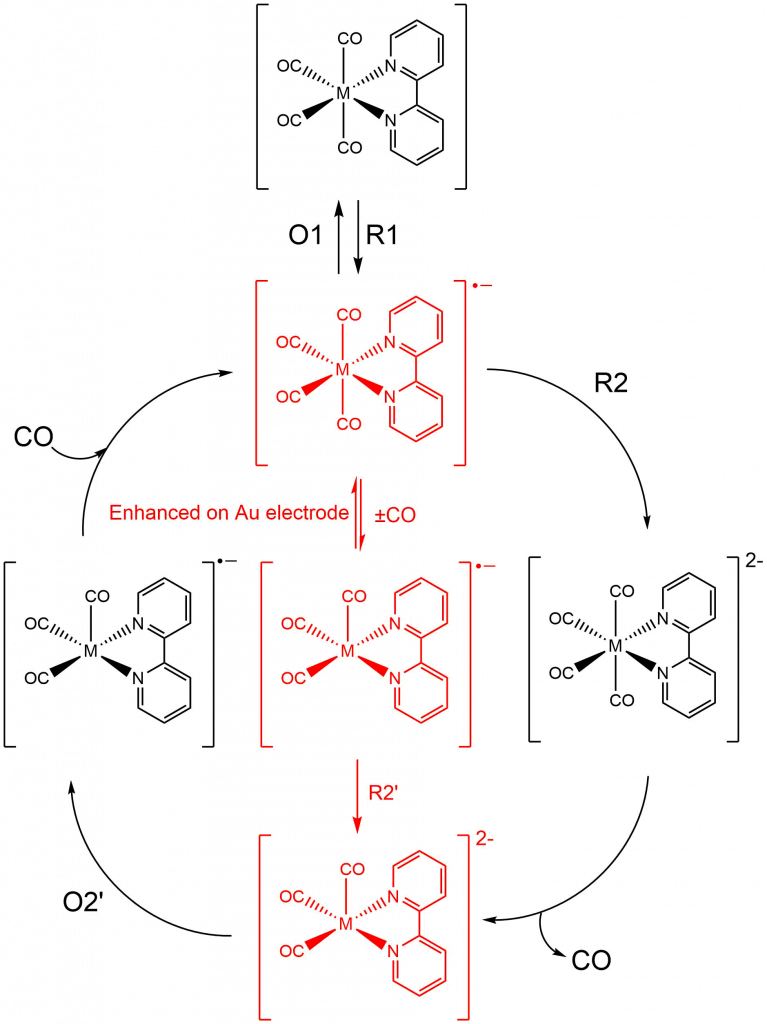About Us
Hartl Research Group

The Hartl Research Group 2018
Professor František Hartl

František Hartl is Professor of Inorganic Chemistry and Head of Molecular Chemistry at the University of Reading. He is an internationally renowned researcher in the field of spectroelectrochemistry, redox catalysis and photoinduced electron and energy transfer. He has published over 180 peer-reviewed papers and review articles in a research career spanning 30 years at the Heyrovsky Institute of Physical Chemistry in Prague, the University of Amsterdam, and the University of Reading (since 2008). Currently, he takes a lead in an Overseas Talent Plan 111 project in molecular electronic materials at the Central China Normal University in Wuhan. Spectroelectrochemistry Reading is a spin-out company at the University of Reading. It was established by Professor František Hartl in 2015, and is based within the dedicated Spectroelectrochemistry laboratory in the Department of Chemistry.
Research Topics
Multimetallic Smart Materials Development of Spectroelectrochemistry Electrocatalytic Reduction of CO2
Multimetallic Smart Materials
The limits of the technologies applied in the production of powerful microelectronics, like photolithography, will be reached in the coming years. If the trends set by Moore’s Law are going to continue into the future then a new bottom-up approach to the production of electronics will be needed. This is why the study of molecules that can function as wires & switches – so called “Smart Materials” – are a major focus of the research in our lab.

Selected Publications
Ou, Y.-P.; Zhang, J.; Zhang, M.-X.; Zhang, F.; Kuang, D.; Hartl, F.; Liu, S. H. Bonding and Electronic Properties of Linear Diethynyl Oligothienoacene-Bridged Diruthenium Complexes and Their Oxidized Forms. Inorg. Chem. 2017, 56, 11074–11086.
Strudwick, B. H.; Zhang, J.; Hilbers, M. F.; Buma, W. J.; Woutersen, S.; Liu, S. H.; Hartl, F. Excited-State Electronic Asymmetry Prevents Photoswitching in Terthiophene Compounds. Inorg. Chem. 2018, 57, 9039–9047.
Herrmann, D.; Rödl, C.; de Bruin, B.; Hartl, F.; Wolf, R. Synthesis, Electronic Structure and Redox Properties of the Diruthenium Sandwich Complexes [Cp*Ru(μ-C10H8)RuCp*]x (x = 0, 1+; Cp* = C5Me5 ; C10H8 = Naphthalene). Dalton Trans. 2018, 47, 11058–11069.
Development of Spectroelectrochemistry
In addition to producing our wide range of OTTLE cells for the scientific and industrial communities, we also like to expend some efforts to furthering the field of spectroelectrochemistry in general. The versatility of our cell allows us to explore new frontiers in using exotic electrolytes (Ionic Liquids), laser techniques such as 2D-IR spectroelectrochemistry, as well as begin to unravel electrode-substrate interactions which may play a strong role in the reactions (Variable electrode materials – graphite, platinum gold).
Selected Publications
Pizl, M.;Taylor, J. O.; Vleck, A.; Hartl F. 2D-IR spectroelectrochemistry of Ru-NCS complexes reveals complex vibrational dynamics in their redox states. Manuscript in preparation.
Electrocatalytic Reduction of CO2
The role that anthropogenic emission of CO2 plays on our climate is undeniable. Although often seen only as an environmentally harmful waste product, through its reduction, CO2 can be used as convenient source of both carbon-based fuels (CH3OH, CH4) and chemical feedstocks (CO). The reduction of CO2 is difficult, requiring a catalyst to trigger the reaction. The final focus of our research is then on these catalysts – particularly organometallic catalysts based on the relatively cheap and earth-abundant metals of Group 6. Using spectroelectrochemistry we explore the complex reduction pathways of these catalysts, and assess their reactivity toward the conversion of CO2 to CO.

Selected Publications
Taylor, J. O.; Leavey, R. D.; Hartl, F. Solvent and Ligand Substitution Effects on the Electrocatalytic Reduction of CO2 with [Mo(CO)4(x,x′-dimethyl-2,2′-bipyridine)] (x= 4–6) Enhanced at a Gold Cathodic Surface. ChemElectroChem 2018, 5, 3155–3161.
Ryan, D. E.; Cardin, D. J.; Hartl, F. η3-Allyl Carbonyl Complexes of Group 6 Metals: Structural Aspects, Isomerism, Dynamic Behaviour and Reactivity. Coord. Chem. Rev. 2017, 335, 103–149.
Spall, S. J. P.; Keane, T.; Tory, J.; Cocker, D. C.; Adams, H.; Fowler, H.; Meijer, A. J. H. M.; Hartl, F.; Weinstein, J. A. Manganese Tricarbonyl Complexes with Asymmetric 2-Iminopyridine Ligands: Toward Decoupling Steric and Electronic Factors in Electrocatalytic CO2 Reduction. Inorg. Chem. 2016, 55, 12568–12582.
Current Members
Postdoctoral Research Assistants
PhD Candidates
James Taylor
PhD Topic: “Advancing Spectroelectrochemistry in Coordination Chemistry, Laser Spectroscopy and Green Electrochemistry”
Daniel Skelson
PhD Topic: “Development of Spectoelectrochemistry on a Graphite Electrode”
MSc Students
Ioanna Gregoriou
MSc Topic: “Ionic Liquids as electrolytes for spectroelectrochemistry”
Mingyi Zheng
MSc Topic: “Spectroelectrochemistry of Some Selected Ru-Polypyridyl Complexes”
MChem Students
Yaroslava Zelenkova, Emily Garrett
